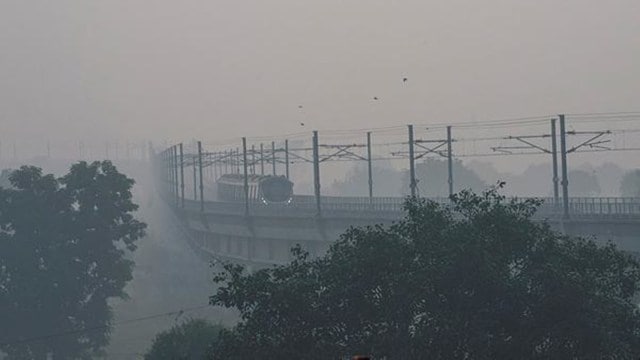Delhi Air Pollution: Capital’s air quality continues to be ‘very poor’ as 2nd stage of GRAP kicks in
At 9 am, an AQI of 318 was recorded in the capital and it is the second most polluted place in India, behind Haryana's Jind, where the AQI stood at 322.
 Air Pollution: As a layer of smog enveloped the city, AQI levels in several areas including Mundka, Bawana, Wazirpur, Jahangirpuri, Anand Vihar, Alipur, Ashok Vihar, Aya Nagar, Burari, Dwarka, Mandir Marg, dropped to the 'very poor' category. (PTI)
Air Pollution: As a layer of smog enveloped the city, AQI levels in several areas including Mundka, Bawana, Wazirpur, Jahangirpuri, Anand Vihar, Alipur, Ashok Vihar, Aya Nagar, Burari, Dwarka, Mandir Marg, dropped to the 'very poor' category. (PTI)Delhi-NCR Air Quality: A day after Delhi reported the worst AQI in the entire country, the Capital’s pollution levels continued to remain in the “very poor” category. At 9 am, an AQI of 318 was recorded in the capital, making it the second most polluted place in India, after Haryana’s Jind, where the AQI stood at 322.
As a layer of smog enveloped the city, AQI levels in several areas including Mundka, Bawana, Wazirpur, Jahangirpuri, Anand Vihar, Alipur, Ashok Vihar, Aya Nagar, Burari, Dwarka, Mandir Marg, dropped to the ‘very poor’ category.
As per the Indian Institute of Tropical Meteorology forecast, the air quality in Delhi is likely to be in lower end of very poor category from Tuesday to Thursday. “Meteorological conditions are unfavourable for effective dispersion of pollutants as calm winds prevail during night. Additional emissions from sources such as stubble/waste burning are likely to deteriorate air quality significantly,” the scientific institution said in its website.
On Monday, Delhi recorded an AQI of 310 in the “very poor category” – up from Sunday’s 277 in the “poor” category. The 11-point action plan as per Stage II of the Graded Response Action Plan (GRAP) was kicked in following the rise in pollution levels. Stage I GRAP is already in place and GRAP is a set of emergency measures to control air pollution, implemented stage-wise by the Commission for Air Quality Management (CAQM) in NCR and adjoining areas.
An AQI in the ‘very poor’ category – colour-coded as red – can cause respiratory illness on prolonged exposure to all people, as per the CPCB. An AQI between zero and 50 is considered ‘good’, 51 and 100 ‘satisfactory’, 101 and 200 ‘moderate’, 201 and 300 ‘poor’, 301 and 400 ‘very poor’, and 401 and 500 ‘severe’.







